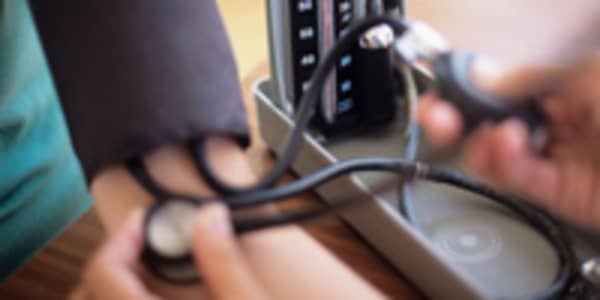Though the U.S. had made much progress taking medical-record keeping into the digital age, there's still some doubt that the government will reach its target by the prescribed deadline.
“We have found that 40 percent has been reached by early 2010, which was a huge jump from the 2007 to 2008 numbers, but the 50 percent goal is still very optimistic,” says Marianne Dekker Mattera, managing editor of the trade publication MedPage Today.
When President-elect Barack Obama proposed a massive plan that included standardization of health records in January 2009, only some 8 percent of the nation’s 5,000 hospitals and 17 percent of roughly 800,000 physicians used a common computer record-keeping system.
What's more, at that time only 14 percent of all U.S. medical practices had gone digital, according to the Department of Health and Human Services—a far cry from the 2014 goal of 50 percent.
“It has been a slow start, but we will get there,” says Anand Gaddum, health-care practice director for iLink Systems, a software services provider.
With tens of billions of dollars at stake, there is no shortage of incentives to enter the market. Studies from RAND, Harvard University and Commonwealth Fund put the transformation cost at $75 billion to $100 billion over the next 10 years.
“Physicians and physicians' practices are shelling out a lot of money," says Medpage's Mattera.
Among the big and small players are General Electric , Athena Health, NextGen, eClinicalWorks, Allscripts, Epic and Ingenix.
“GE has deep inroads with medical equipment, and a vast medical sales force," says Jack W. Plunkett, of Plunkett Research, a leading analyst in the medical field. “Athena Health has also gotten got out there early with its comprehensive system.”
Carrott And Stick
Going digital sounds easy but the rollout has had its share of wrinkles, on top of the basic human reluctance to embrace dramatic change and more focused reservations about new adopting technology.
For one, adoption costs money and has hidden costs, such as the downtime and training, which appears to be a burden for some.
“Sole practices cannot afford it or feel that they can’t afford it," says Mattera.
“We need to get more smaller physicians, nurse practitioners, and PAs using it as well," adds Rosemarie Nelson, a principal at Medical Group Management Association.
Some electronic health record, EHR, companies are taking a more aggressive approach than others. Epic is requiring doctors to train 16 hours on its EHR product, says Nelson, "which is working."
"There is going to be training on how to use a computer in the first place, there is training in how the data is used, there is a lot of learning in what the data says,” adds John Glaser, PhD, CEO of the Health Services Business Unit, Siemens Healthcare told CNBC. “It all means a lot of learning across the board.”
One possible turning point could come in 2011-2012, when financial aid to encourage adoption kicks in. Physicians and hospitals can apply for funding under a provision of the multi-year stimulus act and must begin participation by 2012 to receive the full benefits.
The Medicaid and Medicare and Medicaid Electronics Health Incentive Programs together provide up to $107,750 in incentive payments over the next few years "to adopt, implement, upgrade or demonstrate meaningful use of certified EHR technology."
According to government data, 77,549 eligible providers have registered under the EHR incentive programs, with aid totaling $397.4 million as of the end of July.
"The incentives are working," says Nelson.
“I suspect we’ll have serious implementation at the modest level by 2012,” says Plunkett, citing the "the generous sums of money that are being offered.”
The incentives, like many government aid programs, require demonstrable compliance, and failure to achieve that means penalties in the form of reduced Medicare reimbursements.
“For 2015 and later, Medicare-eligible professionals, eligible hospitals, and critical access hospitals, CAHs, that do not successfully demonstrate meaningful use will have a payment adjustment in their Medicare reimbursement,” says CMS spokesman Joseph Kuchler.
Tech Surprise
One unexpected force already supporting pick-up is cloud computing.
"With the need to lower infrastructure costs, the cloud presents a good option,” says Judy Hanover, research director for IDC Health Insights, who adds that this is no riskier than non-cloud solutions.
Cloud computing is also making this transition to digital a little easier for those who don’t have the skill sets to learn a new system, or those who don’t have the ability to utilize a data warehouse.
“Athena Health is especially interesting,” says Nelson, “Not only do they have the power of volume, but they have their cloud-based model. It accumulates data from all users and feeds it back.”
Cloud-based or otherwise, a digital record system will serve doctors and patients well, say analysts. And though it may make business difficult for health insurers in the early stages of adoption, it will be a boon to those who supply the products and services to the industry.
“It will include the bigger players, but the smaller folks as well," says Glaser of Siemens. "It will include the consulting firms, the system integrators, plus the providers who use this to make their practice better. But the consumer will do better because care will get better.”




